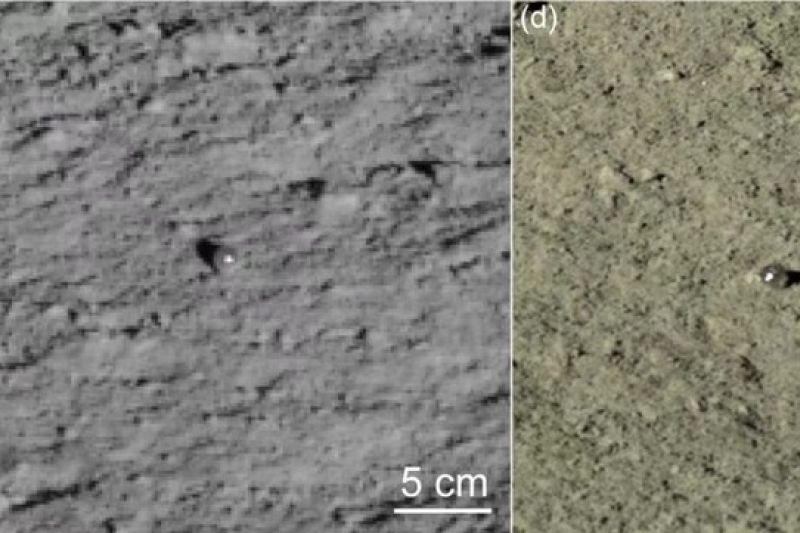Jakarta (ANTARA) – The lunar probe Yutu-2 from China’s Chang’e-4 mission discovered two macroscopic translucent glass grains during its exploration of the far side of the Moon, which could potentially help reveal the history of the Moon’s early collisions.
According to a study published in the Science Bulletin, Yutu-2 captured images of the two translucent grains using a panoramic camera.
No compositional data have been obtained for these grains. But their unique morphology and local context suggest that the glass beads are likely the result of impact, cooled anorthocytic impact melt produced during a crater-forming event, rather than from a volcano or other planetary body, the researchers said.
The Moon’s anortocytes are the main rocks of the Moon’s plateau, which are formed in the Moon’s ocean of magma.
The researchers say the grains differ from the glass grains sampled by the Apollo missions, because they are larger in size and exhibit coloration.
They predict that the glass grains will be found throughout the lunar highlands, providing a promising sampling target that could reveal the history of the Moon’s early collisions.
The Chang’e-4 probe, which launched on December 8, 2018, made its first smooth landing at Von Karman Crater in the South Pole-Aitken Basin on the far side of the Moon on January 3, 2019. So far, Yutu-2 has traveled more than 1,000 meters on the far side of the Moon.
Reporter: Xinhua
Editor: Desi Purnamawati
COPYRIGHT © ANTARA 2022
–


